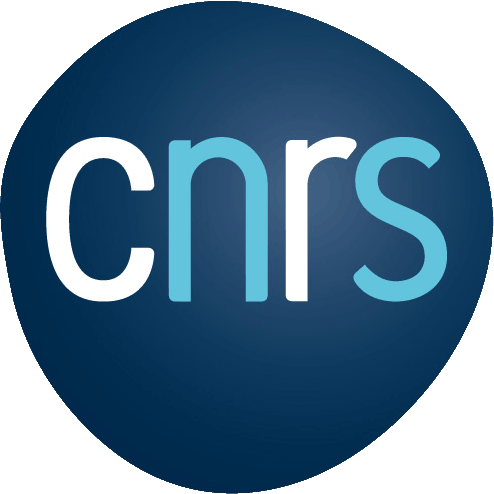Offre en lien avec l’Action/le Réseau : – — –/– — –
Laboratoire/Entreprise : CIRAD – UMR TETIS
Durée : 3 ans
Contact : roberto.interdonato@cirad.fr
Date limite de publication : 2023-04-17
Contexte :
L’objectif global de cette thèse est le développement de méthodologies innovantes, basées sur les techniques d’analyse de réseaux complexes, pour l’analyse des graphes d’interaction issus de la modélisation des dynamiques paysagères.
La modélisation des dynamiques spatiales est une approche privilégiée pour étudier les processus complexes d’interaction homme-environnement qui sont au centre des systèmes d’utilisation des terres (land use system). Dans ce contexte, une nouvelle approche fondée sur le concept de graphe d’interaction a été développée au CIRAD/UMR TETIS, avec l’objectif de permettre un meilleur couplage des systèmes de modélisation avec des SIG (Système d’Information Géographique) et améliorer la modélisation des mécanismes qui sont influencés par des structures spatiales dynamiques. Le graphe d’interaction est un graphe (un ensemble de nœuds connectés par des arcs) dont les arcs peuvent porter des fonctions d’interaction. Un système représenté par des graphes d’interaction peut ainsi évoluer lorsque les fonctions d’interactions sont activées et que celles-ci modifient les entités connectées. Les éléments présents dans un espace géographique peuvent ensuite définir des relations spatiales, fonctionnelles, hiérarchiques et même sociales. La mise en œuvre de cette approche s’appuie sur le langage de modélisation Ocelet, et son environnement logiciel de développement (http://www.ocelet.org).
Sujet :
Les modèles développés avec Ocelet sont employés principalement pour simuler des dynamiques spatiales dans différents systèmes territoriaux complexes, comme par exemple, pour comparer plusieurs scénarios d’utilisation des terres. Ces modèles font généralement intervenir plusieurs graphes d’interaction dans des structures porteuses de connaissances du fonctionnement et de l’organisation du territoire. Jusqu’à présent, lors de déploiement de ces modèles, seuls les résultats de simulation sont analysés ; les graphes ne le sont pas, alors qu’ils sont une expression formelle de processus très divers qui interagissent dans le territoire. Ces analyses permettraient notamment d’expliciter les liens entre structure et fonctionnement du territoire, pour viser, à terme, la possibilité d’inférer des connaissances des processus à partir de l’exploration de données spatiales, comme celles issues d’images satellite.
Ce travail permettra d’exploiter de manière originale les modèles de simulation spatiale développés avec l’approche Ocelet, en permettant de créer de nouvelles connaissances à partir des graphes d’interaction modélisés et de ses dynamiques. Des algorithmes de classement, clustering, diffusion de l’information et prédiction des liens spécifiquement adaptés au contexte des relations caractéristiques (e.g., spatiales, fonctionnelles, hiérarchiques et sociales) entre les entités d’un système paysager pourront être développés. Ceci représentera une contribution significative aussi bien dans le domaine de l’analyse de réseaux et science des données, que dans celui de la modélisation et de l’analyse des dynamiques paysagères.
La première étape du travail de recherche est liée à la nécessité de comprendre comment les graphes d’interaction entre les éléments d’un paysage visible sur les images satellite, et qui expriment le fonctionnement du socio-écosystème présent dans le paysage, se traduisent dans la structure en réseau de ces graphes. La seconde étape consistera à développer et implémenter des méthodes d’analyse de réseaux complexes spécifiquement adaptés aux modèles pris en comptes en réponse à la question de recherche précédente. L’idée est d’obtenir une suite de méthodes d’analyse généralisables à différents contextes, qui pourront être ensuite intégrés dans la plateforme Ocelet. Pour mener ce travail, nous adopterons une démarche pluridisciplinaire, où les contributions méthodologiques proposées seront toujours soumises aux avis d’experts en modélisation spatiale des dynamiques paysagères.
Ces deux étapes seront menées d’abord sur une diversité de sites d’études pour lesquels des modèles ont déjà été développés, ou sont en cours de développement (e.g. au Burkina Faso, Sénégal, Mozambique, La Réunion, République du Congo). En particulier, cette thèse sera adossée à deux projets où TETIS est fortement impliquée, et qui mettra en œuvre des modèles spatiaux ambitieux (projet AFD/LUCCIA au Mozambique, pour aider à évaluer la stratégie nationale REDD+, et le projet PUDT Congo, pour aider à optimiser le réseau d’approvisionnement en bois-énergie d’une grande ville). Ensuite, un terrain en Afrique de l’Ouest, en lien avec la question de la sécurité alimentaire, sera privilégié. Des analyses plus contextualisées, plus en lien avec le terrain, seront menées avec une visée explicative des caractéristiques observées dans les réseaux.
Profil du candidat :
Caractéristiques attendues du candidat :
– Une solide formation en informatique (analyse des réseaux complexes et fouille de graphes, fouille de données).
– De bonnes compétences en programmation (Python préférablement) sont attendues.
– Il ou elle devrait avoir terminé (ou sur le point de terminer) un master.
– Bon niveau d’anglais écrit et parlé.
– L’intérêt et/ou une expérience dans les sciences appliquées, notamment en agronomie / environnement / géographie, et dans la mise en œuvre de modèles de simulation seront appréciés.
Formation et compétences requises :
Caractéristiques attendues du candidat :
– Une solide formation en informatique (analyse des réseaux complexes et fouille de graphes, fouille de données).
– De bonnes compétences en programmation (Python préférablement) sont attendues.
– Il ou elle devrait avoir terminé (ou sur le point de terminer) un master.
– Bon niveau d’anglais écrit et parlé.
– L’intérêt et/ou une expérience dans les sciences appliquées, notamment en agronomie / environnement / géographie, et dans la mise en œuvre de modèles de simulation seront appréciés.
Adresse d’emploi :
500 rue Jean François Breton, Montpellier
Document attaché : 202303300902_Analyse de réseaux complexes pour l’analyse de dynamique paysagère.pdf

